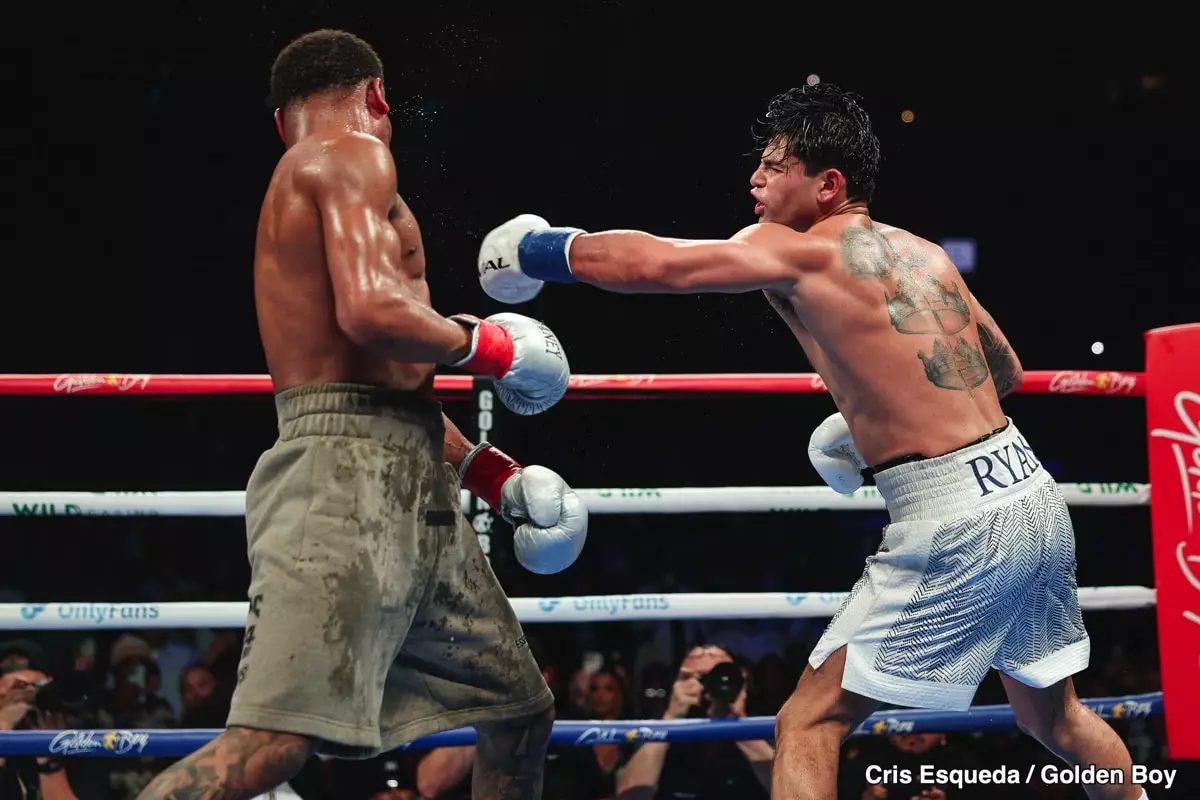In the world of professional boxing, the decision to take a tune-up fight rather than pursuing a high-stakes rematch can be a contentious topic. This scenario has recently played out in the cases of Ryan Garcia and Devin Haney, both of whom are set to face opponents in separate bouts rather than headlining a highly anticipated rematch at Times Square. The implications of these choices speak volumes about their current standings and future prospects in a competitive sport defined by momentum and public perception.
Tune-up fights are generally viewed as opportunities for fighters to regain confidence and refine their skills after a significant bout, particularly following a loss. In this case, Haney, who boasts an undefeated record of 31-0 with 15 KOs, is coming off a defeat against Garcia. Conversely, Garcia, holding a record of 24-1 with 20 KOs, is positioned to face Rolando “Rolly” Romero, a fighter whose recent knockout loss to Isaac Cruz raises questions about his competitiveness in this matchup. The decision for both fighters to take these preliminary bouts can be perceived as sensible, but it also raises concerns about the risks involved.
While Garcia steps into a fight where he is favored, Haney’s selection of former unified champion Jose Ramirez as his opponent is more precarious. Ramirez’s record reflects his capability, and his previous accolades signal a clear challenge. The fight’s stakes extend beyond mere numbers; they delve into the fighters’ reputations and the essential question of who stands to benefit more from these fights.
Ade Oladipo, an analyst associated with DAZN Boxing, expressed reservations about both fighters opting for tune-ups instead of engaging directly with one another. Oladipo’s critique touches upon the broader tradition in boxing where potential matchups can be delayed, leading to uncertainty and speculation. He highlights that this decision could be detrimental, especially considering how quickly significant rematches and rivalries can turn stagnant when fighters do not capitalize on momentum.
For Devin Haney, the upcoming clash with Ramirez serves as an essential proving ground. Having suffered a defeat where he was dropped three times, Haney is under pressure to restore his credibility. It is crucial for him to not only return to his winning ways but to do so against an opponent who has a proven track record. If Ramirez capitalizes on Haney’s vulnerabilities, it could severely damage Haney’s reputation and career prospects. The risks are magnified, showing how pivotal this tune-up fight could be for his future.
On the other hand, Ryan Garcia seems to hold a favorable position in his matchup against Romero. Given Romero’s recent losses, Garcia has a solid chance to secure a convincing victory, which would enable him to carry positive momentum towards a rematch with Haney. However, one cannot dismiss the unpredictable nature of boxing—upsets have solidified their place in the sport’s annals. If Garcia were to falter, it would dramatically alter the narrative surrounding the anticipated rematch.
The hesitation to allow Garcia and Haney to face off directly feeds into a larger narrative of missed opportunities in boxing. Had they fought immediately following their last encounter, the stakes would have been elevated beyond the typical implications of career progression—the fans’ expectations were high, and disappointment resonates when fighters choose alternative routes. The boxing community is well aware of the consequences that can arise when fighters bypass direct confrontations; rivalries can lose their fervor, and fan interest may wane.
Historically, we have seen similar situations, such as the drawn-out saga surrounding Deontay Wilder and Anthony Joshua, where opportunities were squandered as both fighters sought safer avenues. The boxing world thrives on rivalry; challenges that seem less daunting can sometimes introduce unforeseen complexities. Ade Oladipo’s assertion that someone on either side is to blame for the non-fight captures the essence of this contradiction in boxing—while strategic maneuvering is sometimes necessary, the desire for unification and confrontation is equally paramount.
As the landscape of boxing evolves, the dynamics between fighters, promoters, and fan expectations continue to shape the fight calendar. The decision of Ryan Garcia and Devin Haney to engage in tune-up fights rather than directly challenge one another illustrates both the strategic thinking that often accompanies these athletes and the potential pitfalls that can arise from such strategies. In a sport defined by risk and reward, the upcoming outcomes of their respective bouts will likely redefine their careers and the future of their rivalry. How each fighter performs could lead to a re-established interest in a rematch, or potentially, a further division that separates them from the competitive high stakes boxing world.


Leave a Reply